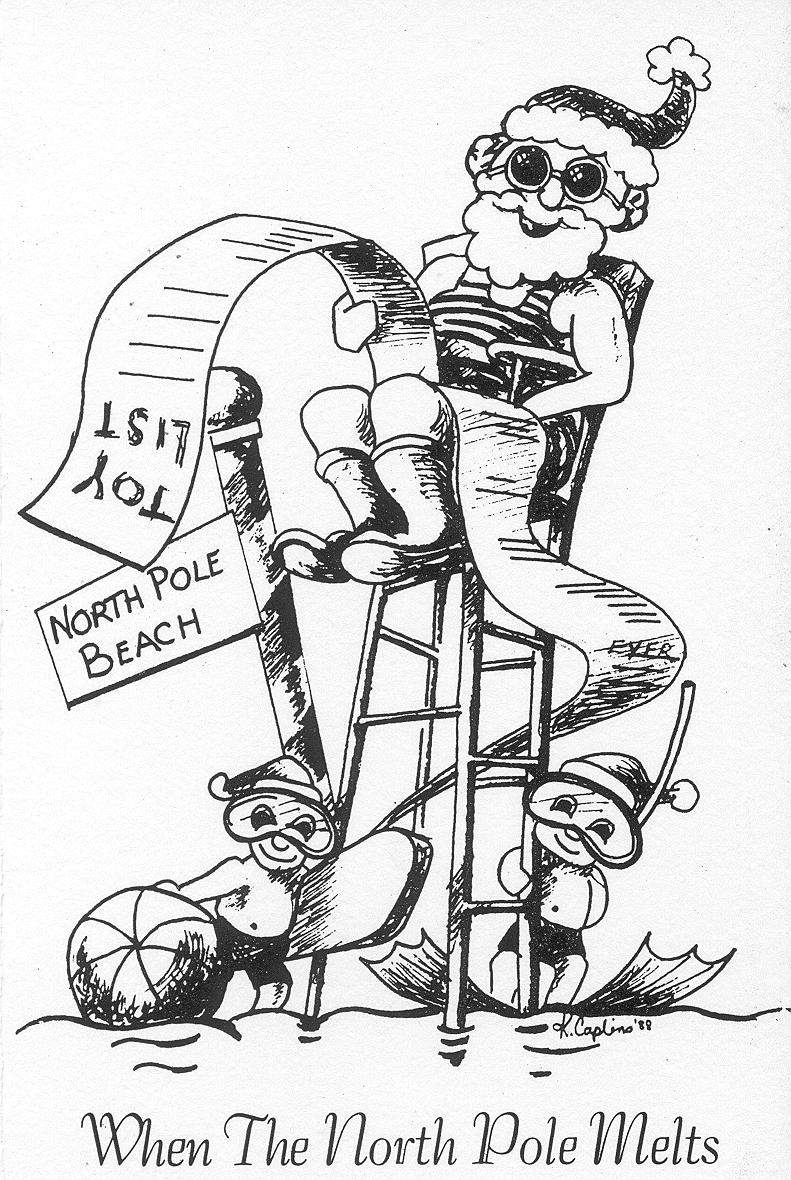
Lyrics and Two Guitars
Arrangement
used in 1988 recording
of When the North Pole Melts
There is one advantage to getting the music from a scientist: You get the background data and methods, with footnotes explaining why.
I am assuming that you play guitar and have learned lots of songs different ways. If you are like me, you have seen many music books written for piano with recommended chords. If you listen closely, often the arrangement is quite different from the original recording. Sometimes the chords actually are what the original band played on acoustic guitar—but without the rest of the instruments, the guitar chords do not really support the melody as well as more complex chords you might make up. Sometimes the chords are pretty good for a solo singer-guitarist, but not what the the guitar was--or should be--playing with a group. For example, if a guitar plays C-major while the bass guitar plays A, B, C, D, we have just heard Am7, an odd inversion of Cmaj7, C-major, and D-sus. So should the guitarist just play the C, or play all those other chords, some of which can not really be played on a single guitar? It depends on what other instruments you have.
With that background, here is a .pdf with the chords to When the North Pole Melts. The arrangement has two guitars strumming chords. At the bottom of the neck, strumming as many open strings as possible, is what I’ll call "first guitar". From the middle to the top of the neck is the "second guitar". The first and second guitars correspond roughly to the left and right hands of a piano. If you have one guitar and a bass guitar, the bass guitar should play "first guitar" and the six-string guitar should play "second guitar". If you have one guitar, and 2-3 singers, then one of the singers should sing the bass part of the song, and the six-string guitar should play "second guitar"--unless no one can sing the bass part, in which case the one guitar should play first guitar. Put another way, if you look at the choral arrangement, the first guitar includes the bass and usually the baritone notes, while the second guitar includes the tenor and soprano notes. Thus, with two guitars one can get reasonable-sounding inversions of chords that sound great on a piano but weird on a single guitar.
Somewhere in my files, I actually have a version with the chord charts
written out with diagrams of the fretboard—but I can’t find the one hard
copy I printed out and I can’t get my 1988 software to print out the "mp1"
file that stored the diagram. So all I can give you now is the common abbreviations
with the number of beats for each chord. The top line is second guitar,
the bottom line is first guitar.